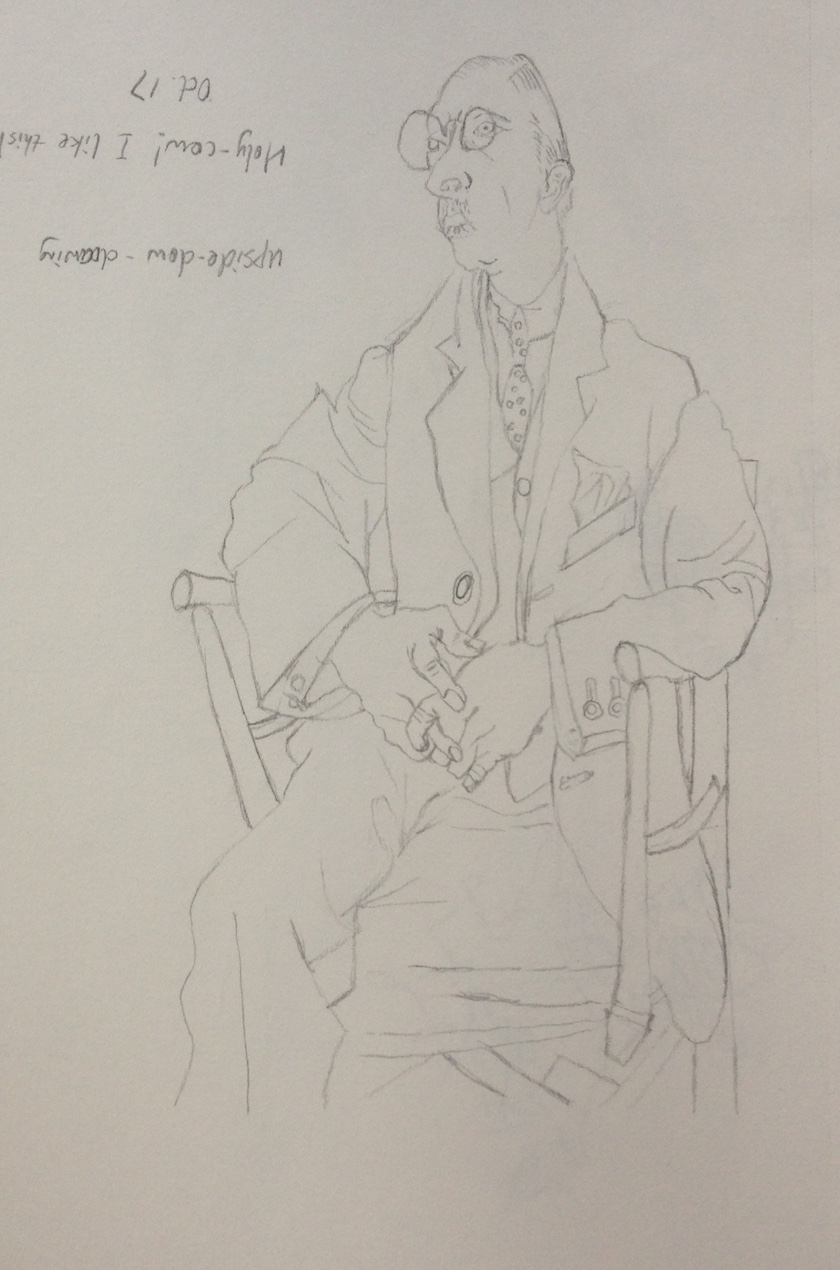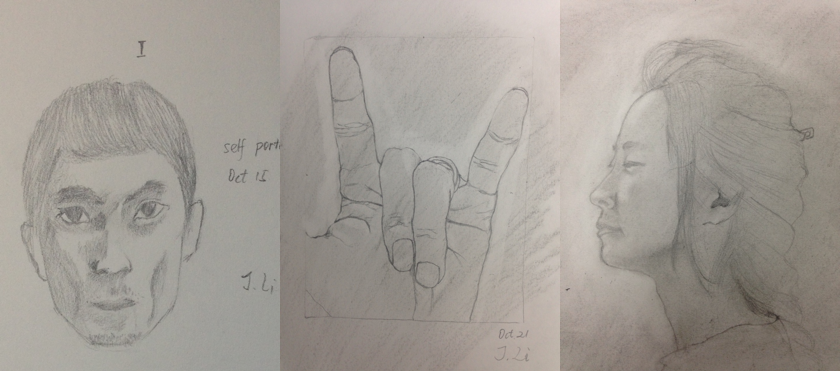It all started out in June, 2014, during my summer internship at a tech company. I wanted to learn some design techniques to make my web page more visually attractive. Some searches landed me on Cheng’s page How to Become a Designer without Going to Design School. Her suggestions all looked reasonable to me at that time, so I made a plan to first follow the book You Can Draw in 30 Days.
I blocked one hour every night just for drawing. Soon I found myself drawing more than an hour a day. I enjoyed expressing all kinds of objects on paper. It felt good to unconsciously spend a few hours without worrying anything. Conceivably, I finished the book in 30 days. Did I continue her following plan to learn design? No. After walking through that book, I thought I might have found something that I really enjoyed doing, something to me just as intriguing as programming.
So I planned to dig deeper into drawing. As for drawing, I couldn’t help looking for challenges, and I wanted to be good at all parts (computer science students love solving hard problems. I was no exception). Figure drawing looked extremely fun, and hard, so I decided to learn that first. I knew I was pretty good at imitating a complicated human figure on drawing books, but I couldn’t draw from real life. As usual, I did some research on this problem, and concluded that I needed anatomy knowledge. I then divided the training plan to anatomy study, value and color, and composition. I believed by mastering these skills I could master most of drawing.
Everything went well in the beginning. There were a few good books that they rigorously explained everything about figure drawing. Some were easy to understand, like Loomis’ Figure Drawing for All It’s Worth. Some were esoteric, like Bridgman’s Complete Guide to Drawing From Life. I also bought the online video The Structure of Man. The video itself was awesome; the author had his own methods on figure drawing to guide students bottom up from anatomy. I picked up skills quickly. These books and videos gave me a smooth switch into the drawing world. I had thought drawing was a spontaneous process before I realized that it was actually a deliberate work, just as programming.

As I walked through half of the video, I went to Yellowstone for a short vacation. When I came back, I’ve almost forgotten all the torsos I had learned. This was frustrating. Unless I kept drawing everyday for the rest of my life, or took a career path of drawing, all I had learned would be gone someday. Once I felt I would get nowhere, my motivation sagged. It happened to be the graduation season, so I took a few weeks off from drawing.
I squeezed a lot of time to draw when I was in school. Students in the computer science department were making jokes about dropout of school to get some sleep. I enjoyed school most of the time, but sometimes felt casted away from the rest of world after programming days and nights. The only reason for me to keep drawing in such a tight schedule was just a hope to reconnect the world. Did it work? Looking back, I would say absolutely. Drawing gave back to me my interests to read the sky and the vein running through a leaf.

After I graduated, I got a lot of free time. I still believed my theory, that I could rule them all by mastering anatomy, value and color, and composition. Again, I started to work on anatomy books, as well as a few other figure drawing books, in the hope that different books would give me different perspectives. As before, I blocked some time every night for drawing. It began well, but collapsed again in a few month. It was not fun whatsoever to remember the shape of scapula and originates of triceps. I knew anatomy important, but I just couldn’t figure out how I could remember all these damn things.
One day as I poked around in a secondhand bookstore, I saw a book called Drawing on the Right Side of the Brain. I remembered that someone had recommended it on Deviantart, so I took it home. I’ve already had enough of drawing the anatomy.
This book was totally different from other drawing books that I’d read. It didn’t talk too much about drawing in the first a few chapters. I used it as sleeping pills mostly until one day I did one of its exercises, a photocopy of Picasso’s Portrait of Igor Stravinsky, upside down.
This was an astonishing moment when I turn the drawing over. I started to take this book and its theory serious. In the following days, I followed instructions, bought tools, and made my own frame viewer. I set up some time everyday to draw again. It took me a few months to finish it. It was the first time in a long time that I realized the meaning of “drawing is observing.” It was also the first time I clearly saw a path that could lead me to a level where I could draw anything from real life. This book helped me regain my ability to observe this world.

After walking through this book, I knew I was still weak on shadows. So I started to practice shadow by self-portrait. At some point, I spent hours and hours just on shading. I knew I would become better and better at realistic shading. One day I took a picture of my wife, wanted to draw at my best effort to see what the best result would be. However, the more I drew, the less I wanted to continue. I measured again and again, shaded, erased, and shaded. All I got was a stiff smile even if my measurement was mostly proportional. My observation might need more practice, I thought, or I just learned to observe in a superficial way?
It turned out that, the way I observed the world was indeed superficial. I had learned from the book to look at this world with few of my interpretation; there was this last piece missing in my previous lesson: sensation and feeling.
Nicolaides filled this last piece in the book The Natural Way to Draw. I started to grow my sensation and feeling through blind contour and gesture drawing. I’ve been deeply touched by Nicolaides’ earnest writing. Reading the book was like talking to a wise old friend. I trusted him, so I put aside all I had learned about drawing. They had done nothing wrong, but taking them along with me would do harm to my future studies. It was just a matter of taste. I practised as if I knew nothing about figure drawing and observation.
Looking back this journey, I feel so lucky to eventually meet Nicolaides. I deeply understand how hard this journey will be, but who cares. I’ve gotten a company.